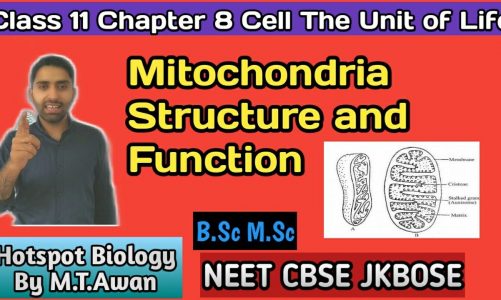MITOCHONDRIA ಮೈಟೊಕಾಂಡ್ರಿಯಾ POWER HOUSE OF THE CELL
PLANT AND ANIMAL CELL BIOLOGY
CELL BIOLOGY
WHAT ARE CELL ?
Cells are the basic building blocks of all living
things. … Cells also contain the body’s hereditary material and can make copies of themselves. Cells have many parts, each with a different function. Some of these parts, called organelles, are specialized structures that perform certain tasks within the cell.
COMPONENTS OF CELLS
A cell consists of three parts
cell membrane, (2) nucleus, (3) cytoplasm
(between the cell and the nucleus membranes)
Within the cytoplasm lie intricate arrangements of
fine fibers and hundreds or even thousands of
miniscule but distinct structures called organelles
plasma membrane
ribosomes cell
Endoplasmic reticulum
Golgi bodies
Mitochondria centriole(animal cell)
vacuole(plant cell) chloroplast(plant cell)
MITOCHONDRIA ಮೈಟೊಕಾಂಡ್ರಿಯಾ POWER HOUSE OF THE CELL
Mitochondria are membrane-bound cell organelles (mitochondrion, singular) that generate most of the chemical energy needed to power the cell’s biochemical reactions. Chemical energy produced by the mitochondria is stored in a small molecule called adenosine triphosphate (ATP)
The mitochondrion is a(outer & inner)
double-membrane-bound organelle found in most eukaryotic organisms. Some cells in some multicellular organisms lack mitochondria.
A number of unicellular organisms, such as microsporidia, para-basalids, and diplomonads, have reduced or transformed their mitochondria into other structures.
A crista (/ˈkrɪstə/; plural cristae) is a fold in the inner membrane of a mitochondrion. The name is from the Latin for crest or plume, and it gives the inner membrane its characteristic wrinkled shape, providing a large amount of surface area for chemical reactions to occur on.
FUNCTION. The mitochondrial matrix is the site of the tricarboxylic acid (TCA) cycle, a series of enzymatic reactions initiated by the conversion of pyruvate and fatty acids to acetyl coenzyme A (acetyl-CoA). Pyruvate and fatty acids are transported into mitochondria from the cytoplasm by membrane-bound permeases.
source

